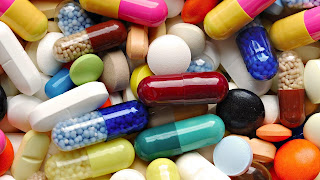
- A substance used for cure, treatment, or prevent diseases. Technical name a drug or medicine for medical purposes.
- Pharmaceuticals are generally classified by their add the body (Pharmacological effect) and by therapeutic use.
- Pharmaceuticals are classified in various origins on the idea of pharmacological properties, mode of action and pharmacological activity, chemical properties, biological system affected, or therapeutic effects. The most widely used arrangement is the Anatomical Therapeutic Chemical arrangement.
- The World Health Organization(WHO) keeps an inventory of essential medicines
Classes of drugs:
- Antipyretics: Reducing fever Paracetamol
- Analgesics: Reducing pain, Aceclofenac, Diclofenac and Tramadol HCl
- Antimalarial drugs: Treating malaria, Hydroxychloroquine
- Antibiotics: Inhibiting germ growth, Cefixime, and Cefroflexine
- Antihypertensive: Control of blood pressure, Amlodipine, and atenolol
- Antidiabetic: Control of blood glucose, Metformine and Gliclazide
- Antipsychotic: Treatment of psychological problems, Olanzapine
- Statins: Lovastatin, Pravastatin, and Simvastatin
Drug nomenclature
- The drug is the systematic naming of medicine, especially pharmaceutical drugs. The majority of medicine have three sorts of names: Chemical, Generic, and Brand names.
- The most important of which is the IUPAC name; generic or non-proprietary names,
- The most important the International Nonproprietary Names are trade names and brand names
- Generic names for drugs have classified the drugs into different categories and also separate drugs within categories.
- A marketed drug may additionally have an Organization code or compound code.
Different drug names
- Chemical Name Generic Name Brand name
- N-acetyl-p-aminophenol Paracetamol Crocin
- 2-(4-(2methylpropyl)phenyl)propanoic acid Ibuprofen Nuprin
- 2-Acetoxy carboxylic acid aspirin Aspirin
- Generics could also be manufactured by less prominent companies or manufactured on an equivalent assembly line as branded products.
- Generic brand products are of comparable quality as branded products but are commonly made up of lower-grade ingredients, or less attention to appearance or flavour.
- A generic brand may be a consumer product without a widely known name or logo because it typically is not advertised.
- Generic brands are known for their very basic packaging and labels, and lower prices.
- A drug or pharmaceutical brand could also be created when the patent of a reputation brand drug expires.
Considerations:
- A drug or pharmaceutical could also be created when a name-brand drug's patent expires. In the United States for most drug patents, the patent term is about 20 years.
- There is also an exclusivity period-the length which depends on the drug type and its use.
- Once a patent ends satisfied, manufacturers are permitted to supply a generic, chemically identical version of the proprietary drug.
- At the top of the generic's period of exclusivity, the other manufacturer which will prove that it can do an equivalent drug efficacy may make a generic version of that drug.
- Some manufacturers may even create a generic version of their proprietary drug, either by manufacturing it themselves or contracting it bent another manufacturer.
- This strategy is sensible because insurance firm policy often dictates that a generic, when available, must be prescribed.
- Generics are sold at a reduction from name drugs, often about 80% less. Due to competition, margins on generic drugs are often very thin.
- Most pharmaceuticals utilized in made in nations like China and India, or use ingredients that come from those countries.
- The defence department purchases 80% of the active pharmaceutical ingredients (APIs) wont to make drugs within us are said to return from China and other countries like India
- The United States of America is the world leader in producing new medicines or drugs.
- The country's strong intellectual property laws, including a relatively free-market system, encourage firms to research new treatments.
#Pharma #Drug

No comments:
Post a Comment
Don't post spam links